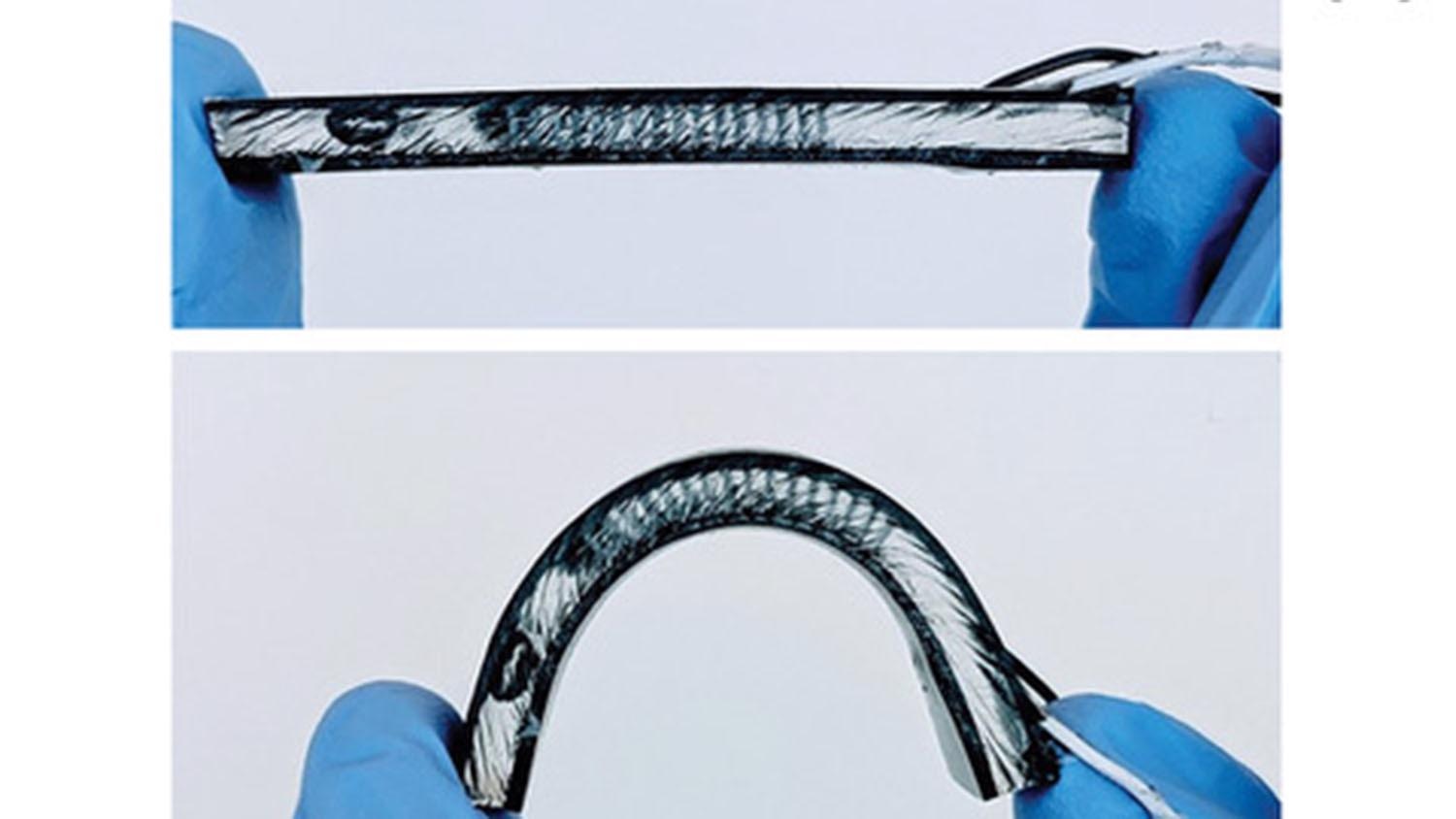Mar 9 2021
Engineers from North Carolina State University have been constantly enhancing the efficiency of a wrist-worn flexible device that harnesses the heat energy from the human body to track health.
 NC State’s flexible heat harvesting device shows better efficiency at retaining heat to power the device. Image Credit: Mehmet Ozturk.
NC State’s flexible heat harvesting device shows better efficiency at retaining heat to power the device. Image Credit: Mehmet Ozturk.
A study published by the NC State researchers in npj Flexible Electronics describes considerable improvements in eliminating leakage of heat in the flexible body heat harvester that was first reported in 2017 and updated in 2020.
The harvester harnesses the heat energy from the human body and powers wearable technologies—consider smartwatches that can measure the blood oxygen, heart rate, glucose, and other health parameters—that never require their batteries to be recharged.
The technology is based on the same principles of rigid thermoelectric harvesters that transform heat to electrical energy.
Flexible harvesters that adapt to the human body are preferred much for use with wearable technologies.
According to Mehmet Ozturk, an NC State professor of electrical and computer engineering and the corresponding author of the study, noted excellent skin contact with flexible devices, as well as the comfort and ergonomic considerations to the device wearer, as the key reasons behind the development of flexible thermoelectric generators (TEGs).
But the efficiency and performance of flexible harvesters historically remain much lower than that of rigid devices, which have excelled in their capability to transform body heat into usable energy.
In the NC State proof-of-principle TEG originally published in 2017, semiconductor elements were electrically connected in series with liquid-metal interconnects made of EGaIn—a non-hazardous alloy of gallium and indium. EGaIn offered both metal-like electrical conductivity and stretchability. A stretchable silicone elastomer was used to embed the complete device.
The upgraded device published in 2020 used the same design but considerably enhanced the thermal engineering of the earlier version. In that design, the density of the semiconductor elements behind the conversion of heat into electricity was also increased.
One of the enhancements was a high thermal conductivity silicone elastomer—typically a kind of rubber—that encapsulated the EGaIn interconnects.
The latest iteration involves adding aerogel flakes to the silicone elastomer to decrease the thermal conductivity of the elastomer. Experimental results revealed that this novel feature decreased the leakage of heat through the elastomer by half.
The addition of aerogel stops the heat from leaking between the device’s thermoelectric ‘legs’. The higher the heat leakage, the lower the temperature that develops across the device, which translates to lower output power. The flexible device reported in this paper is performing an order of magnitude better than the device we reported in 2017 and continues to approach the performance of rigid devices.
Mehmet Ozturk, Professor of Electrical and Computer Engineering, North Carolina State University
Ozturk added that one of the strengths of the NC State-patented technology is that it uses the very same semiconductor elements found in rigid devices improved after several decades of research. The technique also offers a cost-effective means to current rigid thermoelectric module manufacturers to make it to the flexible thermoelectric market.
He further noted that his lab will keep focusing on enhancing the efficiency of such flexible devices.
The co-authors of the study are NC State colleagues Viswanath P. Ramesh, Yasaman Sargolzaeiaval, Taylor V. Neumann, Veena Misra, Michael Dickey, and Daryoosh Vashaee.
This study was financially supported by the NC State’s National Science Foundation-funded Advanced Self-Powered Systems of Integrated Sensors and Technologies (ASSIST) Center under grant EEC1160483.
The ASSIST Center’s mission is to develop self-powered wearables that can perform long-term multi-modal sensing without the need to replace or charge the batteries.
Journal Reference:
Ramesh, V. P., et al. (2021) Flexible thermoelectric generator with liquid metal interconnects and low thermal conductivity silicone filler. npj Flexible Electronics. doi.org/10.1038/s41528-021-00101-3.